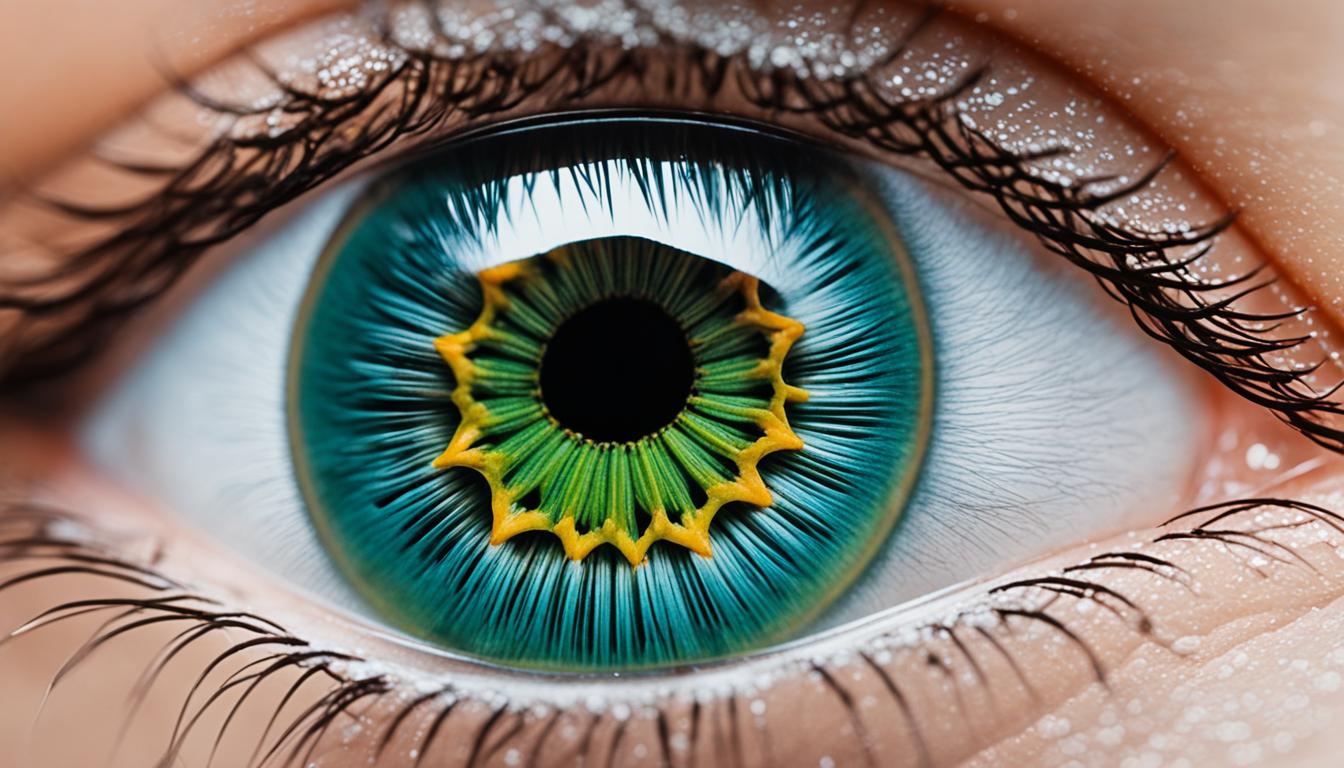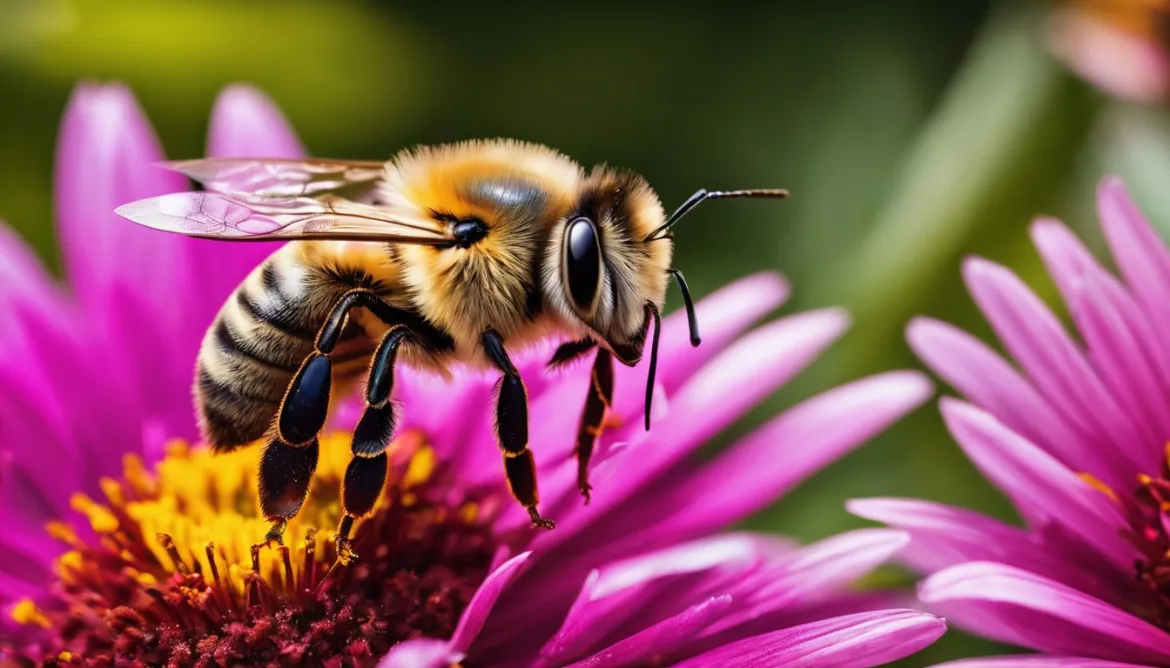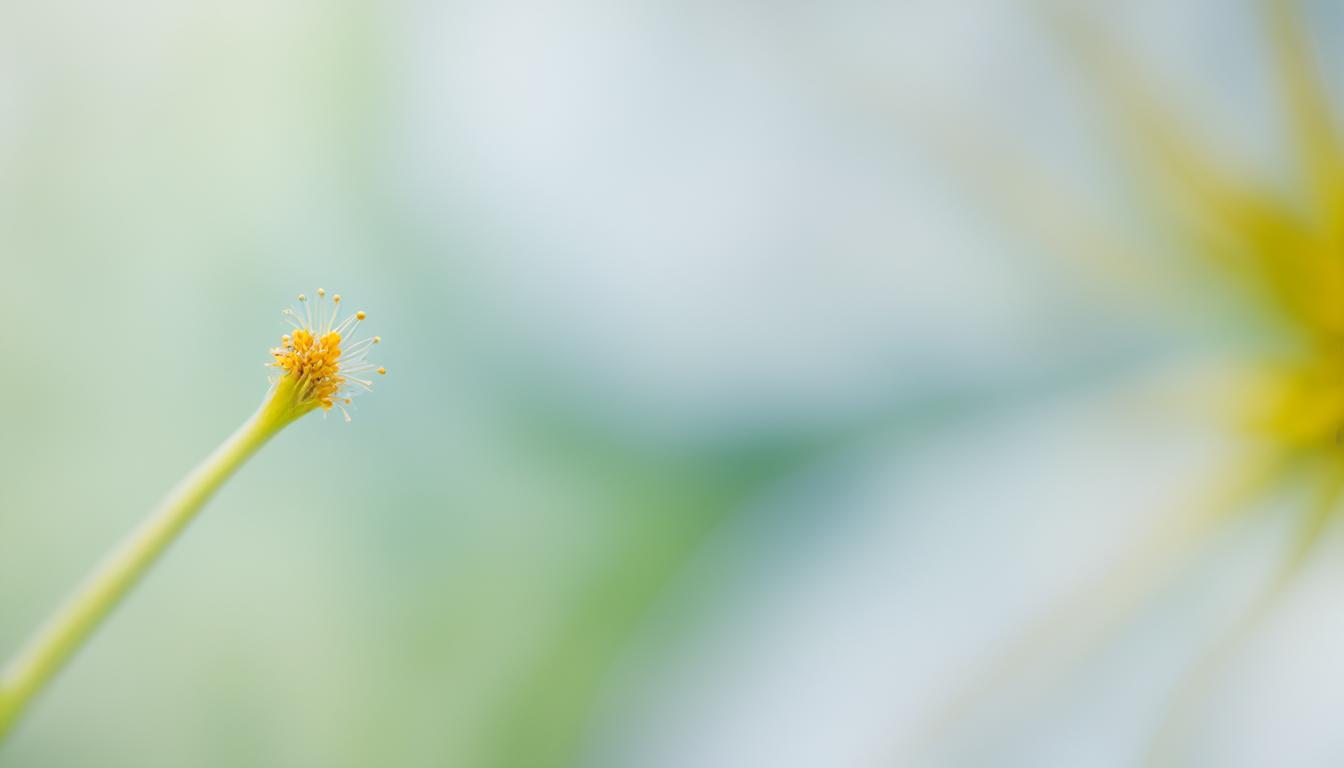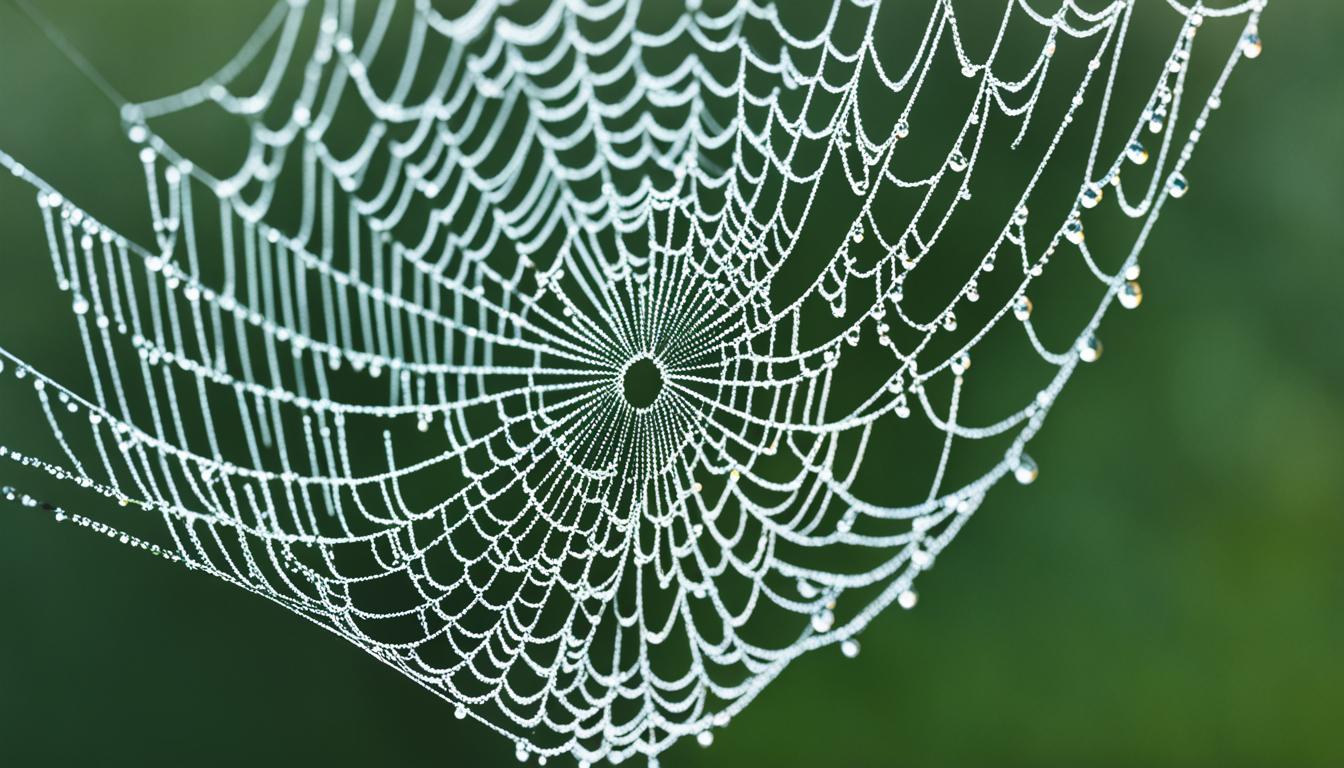Welcome to our guide on using extension tubes and close-up filters for macro photography! Macro photography is a fascinating technique that allows us to capture intricate details and explore the unseen world up close. While dedicated macro lenses offer the best image quality, they can be expensive. That’s where extension tubes and close-up filters come in handy. In this article, we will delve into the theory and practice of macro photography, discuss the equipment needed, and explore the techniques for achieving stunning macro photos.
Key Takeaways:
- Extension tubes and close-up filters are affordable alternatives to expensive macro lenses.
- Extension tubes increase the flange focal length, allowing for greater magnification with any lens.
- Close-up filters reduce the close focus distance of standard lenses, creating a “macro” effect.
- Macro lenses offer the highest image quality, but extension tubes and close-up filters provide flexibility and can produce impressive macro shots.
- Consider factors like budget, desired magnification, lens compatibility, and image quality requirements when choosing between macro lenses, extension tubes, and close-up filters.
Introduction to Macro Photography Theory
Macro photography is a fascinating genre that allows us to capture intricate details of small subjects. To understand how macro photography works, we need to delve into the theory behind it.
At its core, macro photography relies on the optical system of the camera to project the subject onto the camera sensor at a large magnification. This process involves two key factors: the focal length and the focus distance.
The focal length of a lens determines its magnification capabilities. A long focal length lens, such as a macro lens, is designed to capture tiny details by bringing the subject closer to the camera sensor. The longer the focal length, the greater the magnification power.
On the other hand, the focus distance refers to the distance between the lens and the subject. In macro photography, we aim to focus at very close distances to achieve high levels of magnification. By reducing the focus distance, we can capture the fine details that are often invisible to the naked eye.
Macro lenses are specially designed to have a long focal length and a small focus distance, making them the ideal choice for achieving high-quality macro photography.
Macro Photography Theory at a Glance:
- Macro photography relies on the optical system’s ability to project the subject at a large magnification onto the camera sensor.
- The focal length determines the magnification capabilities of the lens. Longer focal lengths offer greater magnification.
- The focus distance refers to the distance between the lens and the subject. A small focus distance allows for high levels of magnification.
- Macro lenses are specifically designed to have a long focal length and a small focus distance, making them ideal for macro photography.
Understanding the theory behind macro photography is essential for capturing stunning close-up shots. In the next sections, we will explore the different equipment options available for macro photography, including macro lenses, extension tubes, and close-up filters. We’ll also discuss the practical tips and techniques for achieving impressive macro photos. So, let’s dive in and uncover the fascinating world of macro photography!
Macro Lenses
When it comes to macro photography, macro lenses are the go-to choice for professional photographers seeking the highest quality results. These lenses are specifically designed to capture intricate details and offer exceptional clarity and sharpness. Let’s explore the features and advantages that make macro lenses a preferred option in macro photography.
Key Features of Macro Lenses
Macro lenses are characterized by their long focal length, which allows for maximum magnification of the subject. The long focal length enables photographers to capture stunning close-up shots with incredible detail. Additionally, macro lenses have a small close focus distance (CFD), enabling them to focus on subjects that are extremely close, enhancing the level of detail even further.
Macro lenses often have a high aperture, which results in a shallow depth of field, perfect for isolating the subject and creating beautiful background bokeh. This creates a visually pleasing separation between the subject and the background, drawing the viewer’s attention to the intricate details.
Another key advantage of macro lenses is their constant focal length. Unlike zoom lenses that have variable focal lengths, macro lenses maintain a fixed focal length, offering consistent performance throughout the entire magnification range. This ensures a reliable and predictable shooting experience, allowing photographers to focus on capturing the perfect shot without worrying about adjusting the focal length.
Types of Macro Lenses
Macro lenses are available in different focal lengths, allowing photographers to choose the lens that best suits their needs. Wide angle macro lenses, typically with a focal length ranging from 24mm to 50mm, offer a wider field of view, making them ideal for capturing subjects in their surrounding environment. Telephoto macro lenses, with focal lengths ranging from 90mm to 200mm or more, provide greater working distances, allowing photographers to capture close-up shots without disturbing or casting shadows on the subject.
| Macro Lens Type | Focal Length Range | Main Features |
|---|---|---|
| Wide Angle Macro Lenses | 24mm – 50mm | Wide field of view for environmental macro shots |
| Telephoto Macro Lenses | 90mm – 200mm+ | Greater working distance for close-up shots without disturbing the subject |
Note: The table showcases the different types of macro lenses based on their focal length range and main features.
Sample Image: Macro Lens in Action
To illustrate the capabilities of macro lenses, take a look at the stunning image below:
Sample Image: A macro lens captures the intricate details of a vibrant flower, showcasing the exceptional clarity and sharpness.
As you can see, macro lenses excel in capturing the fine details and textures of subjects, making them an essential tool for macro photography enthusiasts. The combination of a long focal length, small CFD, high aperture, and constant focal length ensures optimal image quality and allows photographers to unleash their creativity in capturing stunning macro shots.
Close-Up Filters
Close-up filters are a great option for photographers looking to explore macro photography without investing in expensive equipment. These affordable optical attachments can be easily added to standard camera lenses, providing a cost-effective way to achieve impressive close-up shots.
By reducing the close focus distance (CFD) of the lens, close-up filters effectively increase the magnification, enabling you to capture intricate details and create a macro effect. These filters work in a similar way to magnifying glasses, enhancing the subject’s size and bringing it closer to the camera sensor.
One of the advantages of close-up filters is their ability to slightly increase the aperture ratio of the system. This means that you can achieve a shallower depth of field, blurring the background and drawing attention to the main subject.
Close-up filters are available in different diopter numbers, allowing you to choose the level of magnification that suits your needs. They can be used with cameras that have non-replaceable optics, providing a versatile solution for various camera models.
However, it’s crucial to note that close-up filters may result in a slight drop in image quality. As with any additional optical element, the introduction of a filter can cause some degradation, leading to potential loss of sharpness and chromatic aberrations.
To fully understand the impact of close-up filters on image quality, let’s take a look at a comparison:
| Macro Lens | Extension Tubes | Close-Up Filters |
|---|---|---|
| Superior image quality, especially in the corners of the image | Good results in the center of the image, some loss of sharpness and distortion at the edges | Good results in the center of the image, slight drop in image quality, potential chromatic aberrations |
While macro lenses offer the highest image quality, close-up filters provide a budget-friendly alternative that can still produce impressive results. It’s important to weigh the trade-offs between image quality and affordability when considering the use of close-up filters for your macro photography endeavors.
In the next section, we will explore another alternative for macro photography: extension tubes.
Extension Tubes
Extension tubes are invaluable accessories for macro photography enthusiasts. These hollow spacer rings can significantly enhance your macro capabilities by increasing the flange focal length of your camera, resulting in greater magnification.
Unlike close-up filters, extension tubes do not contain any optical elements. This means they can be used with any lens in your camera bag, offering unmatched versatility and compatibility.
Extension tubes are typically sold in sets with different lengths, allowing you to adjust the magnification level to suit your specific needs. By stacking multiple tubes together, you can achieve even higher levels of magnification for incredibly detailed close-up shots.
It’s worth noting that using extension tubes may slightly darken the image due to the increased distance between the lens and sensor. However, this can be easily compensated for by adjusting your camera’s exposure settings.
Furthermore, employing extension tubes requires manual focus, as they disconnect the electronic communication between the camera body and lens. This can be a bit challenging at first, but with practice, you’ll quickly master the art of manually focusing and unlocking the full potential of your macro photography.

Whether you’re photographing intricate details of insects, capturing the delicate beauty of flowers, or exploring the textures of everyday objects, extension tubes are an essential tool for magnifying the world around us.
Pros of Extension Tubes:
- Compatible with any lens
- Offers versatile magnification options
- Cost-effective alternative to macro lenses
Cons of Extension Tubes:
- May slightly darken the image
- Requires manual focus
Practical Field Tests
To determine the effectiveness of extension tubes and close-up filters, we conducted field tests using various lenses. These tests aimed to evaluate the performance of different equipment and shooting techniques in achieving macro photography results.
Wide-Angle Lens with Extension Tubes
When combined with extension tubes, wide-angle lenses showed impressive results during our field tests. The thickness of the extension tubes was comparable to the lens’s focal length, allowing for excellent macro ratios. This combination allowed us to capture intricate details and produce stunning macro shots.
Telephoto Lens with Close-Up Filters
We also tested telephoto lenses with close-up filters and found that they produced remarkable macro ratios. The combination of the telephoto lens’s inherent ability to bring distant subjects closer and the close-up filters further enhanced the magnification. With this setup, we were able to capture intricate details of small subjects with great precision.
Aperture Settings and Shooting Conditions
While macro photography equipment plays a crucial role, it’s important to consider aperture settings and shooting conditions to achieve optimal results. Selecting the appropriate aperture allows you to control the depth of field and blur backgrounds effectively, enhancing the subject’s focus. Additionally, shooting in well-lit environments with stable lighting conditions ensures that you capture sharp and detailed macro images.
| Equipment | Results |
|---|---|
| Wide-Angle Lens with Extension Tubes | Impressive macro ratios due to comparable thickness with focal length |
| Telephoto Lens with Close-Up Filters | Remarkable magnification capabilities, capturing intricate details |
Comparing Extension Tubes and Close-up Filters
When it comes to macro photography, both extension tubes and close-up filters offer affordable alternatives to expensive macro lenses. These accessories can help you achieve stunning close-up shots without breaking the bank. In this section, we will compare extension tubes and close-up filters, highlighting the pros and cons of each.
Extension Tubes
Pros:
- Allow for greater magnification
- Can be used with any lens
Cons:
- May slightly darken the image
Extension tubes are hollow spacer rings that you attach between your camera body and lens. They increase the distance between the lens and the sensor, resulting in greater magnification. This makes extension tubes a popular choice for macro enthusiasts who want to capture intricate details.
One of the key advantages of extension tubes is their compatibility with any lens. Whether you have a wide-angle or a telephoto lens, you can attach extension tubes and experiment with macro photography. This versatility allows photographers to make the most of their existing lens collection.
However, it’s important to note that extension tubes may slightly darken the image. This is due to the increased distance between the lens and sensor, which reduces the amount of light reaching the camera sensor. While this can be compensated for by adjusting the exposure settings, it’s a factor to consider when using extension tubes.
Close-up Filters
Pros:
- Convenient and lightweight
Cons:
- May result in lower image quality
- Can cause chromatic aberrations
Close-up filters, also known as diopters, are optical attachments that screw onto the front of your lens. These filters reduce the minimum focusing distance of the lens, allowing you to capture macro shots. They are a portable and cost-effective solution for macro enthusiasts.
One of the key advantages of close-up filters is their convenience and portability. They are lightweight and easy to carry, making them a suitable choice for photographers who want to travel light. With close-up filters, you can quickly switch between regular and macro photography without changing lenses.
However, close-up filters may result in lower image quality compared to dedicated macro lenses. They introduce additional optical elements between the lens and the subject, which can lead to image degradation. Chromatic aberrations, which are color fringes around objects, can also occur when using close-up filters. These factors should be taken into consideration when deciding between close-up filters and other macro options.
To summarize, both extension tubes and close-up filters offer affordable options for macro photography. Extension tubes provide greater magnification and compatibility with any lens, while close-up filters offer convenience and portability. However, extension tubes may slightly darken the image, and close-up filters can result in lower image quality and chromatic aberrations. The choice between the two depends on personal preference and the specific requirements of your photography.
Next, we will explore other macro options, including teleconverters, bellows, reversing rings, and cropping techniques.
Other Macro Options
In addition to extension tubes and close-up filters, there are several other alternatives for achieving stunning macro photography results. These options offer different levels of magnification and flexibility to suit various shooting needs. Let’s explore some of these options:
1. Teleconverters
Teleconverters are lens accessories that can increase the magnification of your existing lens. They act as a secondary lens between your camera body and lens, effectively multiplying the focal length. By using a teleconverter, you can capture even more intricate details of your subjects in macro photography.
2. Bellows
Bellows are flexible extension devices that provide adjustable extension between your camera body and lens. They allow for precise control over the distance between the lens and the subject, resulting in additional magnification. Bellows are particularly useful when you need to photograph smaller objects with a high level of detail.
3. Reversing Rings
Reversing rings are adapters that allow you to mount your lens in reverse onto your camera body. This technique effectively transforms your lens into a macro lens, providing increased magnification. Reversing rings are a cost-effective solution for macro photography and are compatible with various lenses.
4. Cropping
Cropping is a simple yet effective technique for achieving macro-like results. By capturing an image at a wider focal length and then cropping the image to focus on the desired subject, you can create the illusion of a macro shot. This method is particularly useful when you don’t have specific macro photography accessories on hand.
Explore the table below for a quick comparison of these macro photography alternatives:
| Macro Photography Alternative | Magnification | Flexibility | Compatibility |
|---|---|---|---|
| Teleconverters | Increased magnification | Easy to use and switch between lenses | Compatible with select lenses |
| Bellows | Adjustable magnification | Precise control over extension | Compatible with select camera systems |
| Reversing Rings | Increased magnification | Cost-effective option | Compatible with various lenses |
| Cropping | Variable magnification depending on crop | Easy and accessible technique | Compatible with any camera and lens |
While extension tubes and close-up filters are popular choices for macro photography, these alternatives provide unique options to experiment with and achieve remarkable macro shots. Consider the specific requirements of your photography and choose the alternative that best suits your needs.
Next, we will compare the image quality of macro lenses, extension tubes, and close-up filters to help you make an informed decision.
Image Quality Comparison
A comparison was conducted to assess the image quality of macro lenses, extension tubes, and close-up filters. Our goal was to determine the overall performance and differences between these popular macro photography accessories.
Macro lenses, specifically designed for close-up photography, generally offer superior image quality. With their long focal length and small focus distance, macro lenses excel in capturing intricate details and producing sharp and clear images.
However, extension tubes and close-up filters can still deliver impressive results, particularly in the center of the image. These affordable alternatives can enhance magnification and create a “macro” effect.
While macro lenses maintain high-quality performance throughout the image frame, extension tubes and close-up filters may exhibit some loss of sharpness and distortion at the edges. This is a common limitation associated with these accessories.
To illustrate these findings, take a look at the comparison image below:

As you can see, the macro lens produces excellent image quality across the entire frame, including the corners. The details are sharp, and the colors are vibrant.
On the other hand, the extension tubes and close-up filters show a slight decrease in image quality at the edges of the frame. However, they still perform well in the center, capturing fine details and providing good overall image results.
When considering which option to choose, it’s important to weigh the trade-offs. Macro lenses offer the highest image quality but can be expensive. Extension tubes and close-up filters provide a more affordable solution, though they may introduce some compromises in image sharpness and distortion. Ultimately, the choice depends on your budget, desired image quality, and shooting requirements.
Next, we will explore additional macro photography options, including teleconverters, bellows, reversing rings, and cropping, offering further alternatives for achieving stunning macro shots.
Choosing the Best Option
When it comes to macro photography, choosing the right equipment is crucial for capturing stunning close-up shots. You may be considering a macro lens, extension tubes, or close-up filters, and each option has its own advantages and considerations to keep in mind. Let’s explore the key factors to consider when making your decision.
1. Budget
One of the first things to consider is your budget. Macro lenses tend to be more expensive compared to extension tubes and close-up filters. If you have a limited budget, extension tubes or close-up filters can provide a more affordable alternative without compromising on quality.
2. Desired Magnification
Another important factor is the level of magnification you want to achieve. Macro lenses are specifically designed for macro photography and offer higher magnification capabilities compared to extension tubes and close-up filters. If you require extreme magnification and want the highest quality results, a macro lens would be the ideal choice.
3. Lens Compatibility
Consider the compatibility of the equipment with your existing lenses. Extension tubes can be used with any lens, making them versatile options. On the other hand, close-up filters are typically attached to the front of a lens and should be chosen based on the filter thread size of your lens. Macro lenses, of course, are purpose-built for macro photography.
4. Image Quality Requirements
If you prioritize image quality, macro lenses are known for delivering outstanding sharpness, clarity, and color accuracy. However, extension tubes and close-up filters can also produce impressive results, especially when used correctly. Keep in mind that close-up filters may introduce some image quality compromises and chromatic aberrations, while extension tubes might slightly darken the image.
5. Shooting Conditions
Consider the shooting conditions you typically encounter. Extension tubes and close-up filters are lightweight and portable, making them convenient options for outdoor and travel photography. Macro lenses, while heavier, offer features like autofocus and image stabilization that can be beneficial in specific shooting scenarios.
Summary
The choice between a macro lens, extension tubes, or close-up filters ultimately depends on your budget, desired magnification, lens compatibility, image quality requirements, and shooting conditions. While macro lenses provide the highest quality results, extension tubes and close-up filters offer affordable alternatives that can still produce impressive macro shots. Consider your specific needs and preferences when making your decision, and don’t be afraid to experiment with different options to find what works best for you.
Conclusion
In conclusion, using extension tubes and close-up filters can be an effective and affordable way to experiment with macro photography. While a macro lens offers the best image quality, extension tubes and close-up filters provide flexibility and can be used with a variety of lenses.
Whether you’re a professional photographer or an amateur enthusiast, the choice between extension tubes and close-up filters ultimately depends on your individual preferences and shooting needs. Extension tubes are hollow rings that increase the flange focal length of your camera, allowing for greater magnification and versatility with any lens. On the other hand, close-up filters are optical attachments that reduce the close focus distance of your lens, increasing magnification and offering a lightweight and convenient solution.
By experimenting with different accessories, you can open up new possibilities and enhance your macro photography skills. Try using extension tubes to capture intricate details with a wide-angle lens or attach close-up filters to a telephoto lens for beautiful close-up shots. The key is to understand the unique capabilities of each tool and utilize them accordingly. So, go out there, explore the world of macro photography, and let your creativity shine!
FAQ
What is macro photography?
Macro photography is a technique that focuses on capturing extreme close-up images of small subjects, revealing intricate details not visible to the naked eye.
What are extension tubes?
Extension tubes are hollow spacer rings that increase the flange focal length of the camera, allowing for greater magnification in macro photography.
What are close-up filters?
Close-up filters are affordable optical attachments that can be added to standard camera lenses to reduce the close focus distance and increase magnification for macro photography.
How do extension tubes and close-up filters compare to macro lenses?
While macro lenses offer the highest quality results, extension tubes and close-up filters provide affordable alternatives that can still produce impressive macro shots.
Can extension tubes be used with any lens?
Yes, extension tubes can be used with any lens, offering versatility and the ability to achieve greater magnification.
Do close-up filters affect image quality?
Close-up filters may result in lower image quality and chromatic aberrations, but they offer a convenient and lightweight solution for macro photography.
What other options are there for macro photography?
Other options for macro photography include teleconverters, bellows, reversing rings, and cropping, each offering different levels of magnification and flexibility.
How does image quality compare between macro lenses, extension tubes, and close-up filters?
Macro lenses generally produce superior image quality, while extension tubes and close-up filters can still produce good results, with some loss of sharpness and distortion at the edges.
What factors should be considered when choosing between macro lenses, extension tubes, and close-up filters?
Factors to consider include budget, desired magnification, lens compatibility, image quality requirements, and shooting conditions.
Can I Use Close-Up Filters for Macro Photography to Enhance My Edited Photos?
Yes, close-up filters are a great way to enhance your macro photography. By using these filters, you can magnify the image and capture more details in your shot. This can be further improved with basic photo editing techniques to really make your photos stand out.




